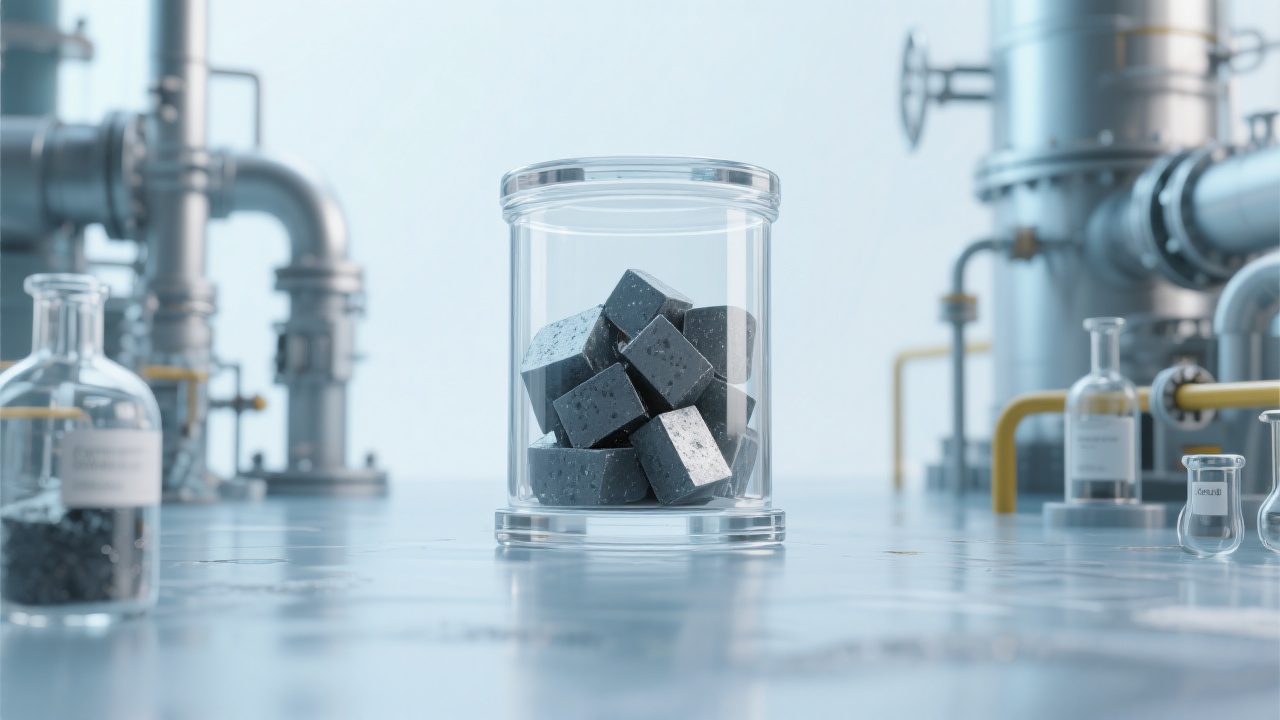
Calcium carbide, a fundamental inorganic compound, plays a pivotal role in the chemical industry, especially in acetylene gas production. Understanding its properties and proper storage methods is crucial for chemical enterprises and related practitioners to ensure production safety and enhance efficiency.
Calcium carbide is typically a gray - black solid with a distinct metallic luster. One of its most significant chemical properties is its reaction with water. When calcium carbide comes into contact with water, it undergoes a vigorous exothermic reaction, producing acetylene gas and calcium hydroxide. For every mole of calcium carbide (64 grams), about 1 mole of acetylene gas (26 grams) is generated under standard conditions. This reaction is not only a key step in acetylene production but also a major factor to be considered in its storage.
Improper storage of calcium carbide can lead to serious safety accidents. In 2018, a chemical plant in [Location] experienced an explosion due to the improper storage of calcium carbide. Water leaked into the storage area, reacting with calcium carbide to produce a large amount of acetylene gas. The accumulated acetylene gas then ignited, causing significant property damage and several casualties. This real - life incident serves as a stark reminder of the importance of proper storage.
Moisture is the biggest enemy of calcium carbide storage. It should be stored in a dry, well - ventilated warehouse with a relative humidity below 70%. The storage area should be equipped with dehumidifiers if necessary. Additionally, the calcium carbide should be stored in sealed containers to prevent moisture from entering. For example, using high - quality steel drums with tight - fitting lids can effectively protect the calcium carbide from moisture.

Since the reaction between calcium carbide and water is exothermic and the produced acetylene is highly flammable, fire prevention is essential. The storage area should be far away from heat sources, open flames, and electrical equipment that may generate sparks. Fire - fighting equipment such as dry powder fire extinguishers should be readily available in the storage area. The storage temperature should be kept below 30°C to reduce the risk of spontaneous combustion.
Calcium carbide should not be stored together with oxidizing agents, acids, or other substances that may react with it. For instance, storing calcium carbide near sulfuric acid can lead to a violent chemical reaction. A clear separation should be maintained between different substances in the storage area, and appropriate warning signs should be placed.
In case of a calcium carbide leakage, immediate action should be taken. First, evacuate the personnel in the affected area to a safe place. Then, use dry sand or other non - reactive materials to cover the leaked calcium carbide to prevent it from reacting with water in the air. Do not use water to extinguish the leaked calcium carbide. After the leakage is under control, collect the calcium carbide and properly dispose of it according to relevant regulations.

Calcium carbide is a cornerstone of the chemical industry, but its potential hazards cannot be ignored. By following the proper storage guidelines, chemical enterprises can effectively reduce the risk of safety accidents and improve production efficiency. We strongly encourage you to pay close attention to these safety regulations. To learn more about calcium carbide storage and other chemical safety knowledge, click here.











